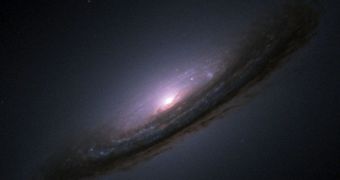A group of astronomers at the University of Copenhagen in Denmark Dark Cosmology Center, led by Darach Watson, proposes a new way of keeping tabs on cosmic distances. Their approach no longer relies on standard “cosmic candles” as reference points, but shifts on active galactic nuclei (AGN).
Standard candle is the generic name given to Type 1a supernovae, the remnants of massive stars that blew up millions of years ago. Their brightness remains unchanged in time, and so experts can use them as reference points for measuring distances in the Cosmos.
Another type of reference point, less used than a standard candle, is a Cepheid variable star. These objects can reveal their intrinsic brightness to astronomers capable enough to work out their pulsation periods. The two aspects are always linked in this type of star.
The key to solving cosmic distances is to calculate the difference between intrinsic and apparent brightness values. This gives astronomers an accurate tally of how far the object being analyzed is.
The DCC team decided to look for other standard candles in the Universe because more recent studies have determined that the objects previously used as reference points may not maintain the same intrinsic brightness at all time. If that is true, then numerous theories may be wrong.
Watson proposes that astronomers move from using Type 1a supernovae and Cepheid variables, and on to using AGN as reference points. These structures are large galaxies in the distant Universe that feature supermassive black holes at their core. AGN release massive volumes of radiation.
One of the interesting things about this radiation is the fact that it ionizes gas in cosmic clouds whenever it encounter them. The phenomenon causes the clouds to emit a characteristic type of light.
But scientists can see radiations from both the black hole and the clouds, and the two are related. By using a technique called reverberation mapping, experts can learn the radius of the cloud emitting the specific type of light.
The radius itself can also give astronomers a hint in their intrinsic brightness, which is what astronomers were interested in in the first place. The method may appear indirect, but the team says that the measurements follow from each other.
Researchers say that the new technique could function to distances reaching 13 billion light-years away, just 750 million years after the Big Bang, Technology Review reports.

 14 DAY TRIAL //
14 DAY TRIAL //